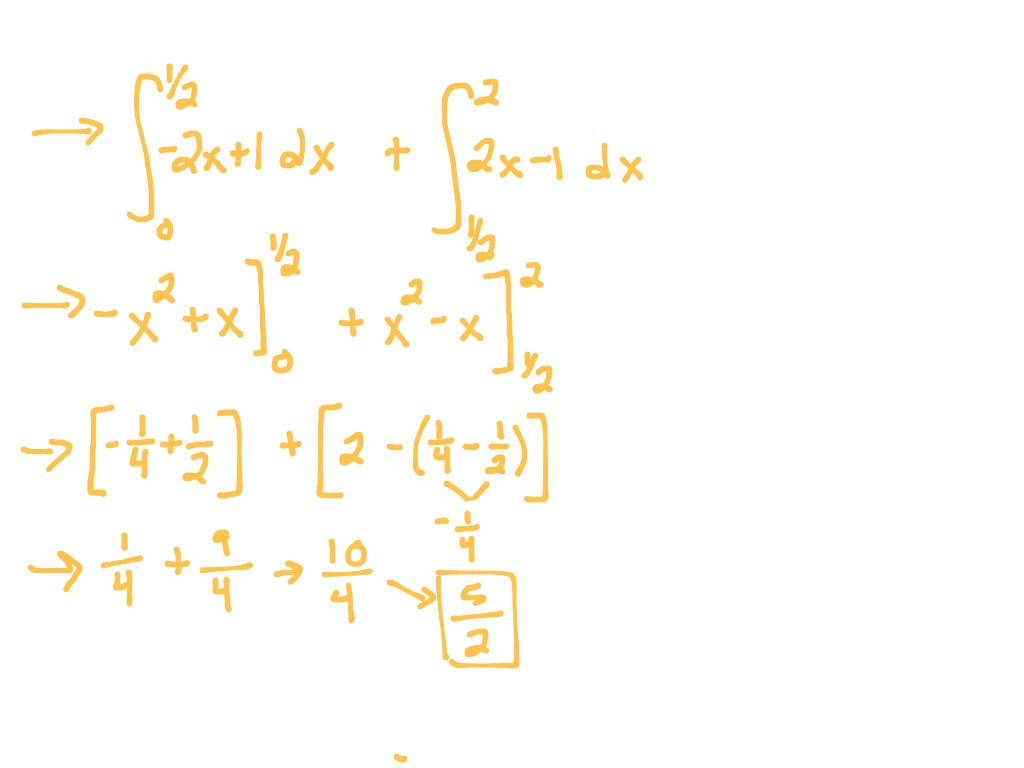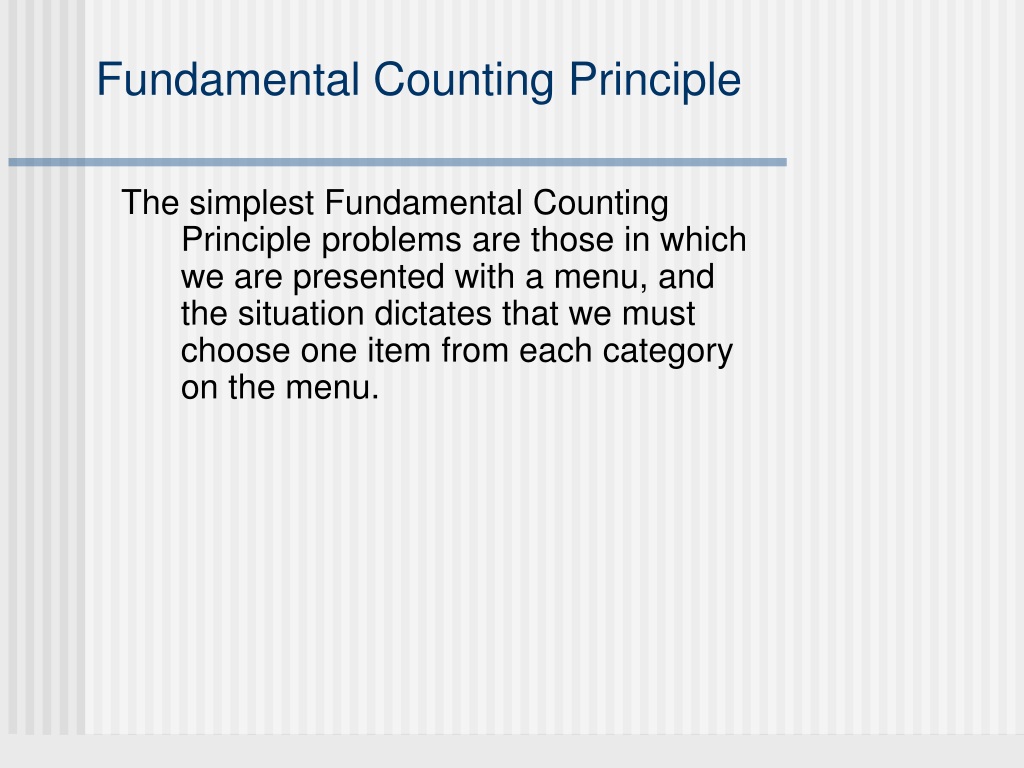
Such arrangements in which order does not matter are called Combinations. In other words, the order in which the team members are selected does not matter. When the coin is tossed the first time, we either get Heads or Tails, and the sample space can be written as $S = \$. Let us consider the example of flipping a fair coin twice. What is the Fundamental Counting Principle It is advisable to refresh the set theory to better understand the material discussed in this article. Examples of the Fundamental Counting Principle.Difference Between the Rule of Sum and the Counting principle.The fundamental counting principle states that if one event can occur in $A$ different ways and a second event can occur in $B$ different ways, then the total number of ways in which both events can occur is $A \times B$.Īfter reading this article, you should understand:

These calculations are essential for solving many probability problems. The fundamental counting principle can be used to determine the number of possible outcomes when there are two or more characteristics. The fundamental counting principle is a mathematical rule that is extensively applied in the evaluation total number of possible arrangements of a set of objects. The fundamental counting principle is a tool that helps us figure out the total possible outcomes of a combination of multiples events in a time-effective. 6 different pairs of dresses to choose from.īased on the above considerations for the fundamental principle of counting, probable decisions could be made out.Fundamental Counting Principle – Explanation & Examples In the case mentioned above, there are total 3 options for choosing a shirt and 2 options for choosing pants Thus, there would be 3 x 2 i.e. If you were to use the Fundamental Counting Principle, you would need to make four dependent decisions.

“If there are ways of doing something (choosing a shirt in this case), and ways to do the other thing (like choosing pants here), then there would be total combinations to choose from. We already know what the fundamental counting principle states. Assuming that she’s already picked up one of the shirts makes out how many different outfits can she choose from. The result is the total number of choices you have. Multiply the number of choices at step 1, at step 2, etc. Make sure the number of options at each step agrees for all choices.

Also, she has pants in the colors: black and white. To use the fundamental counting principle, you need to: Specify the number of choices for the first step. She has several shirts of the colors: purple, red and blue. Which means you may avail 3,600 unique 6-course meals from the available options.Įxample -2: a girl is trying to make out what to wear. The Fundamental Principle of Counting, or the Product Rule When a die is rolled and penny flipped, there are 6 × 2 12 possible outcomes. To know how many unique six course meals you can have, list down the number of choices and multiply.ģ x 2 x 4 x 5 x 10 x 3 = 3,600. Also, with 5 choices of main course, you will have choices from 10 beverages and 3 desserts. For any 6 courses you would have 3 choices for appetizers, 2 for soups and 4 for salads. He may choose one of 3 physics courses (P1, P2, P3), one of 2 science courses (S1, S2) and one of 2 mathematics courses (M1, M2). A student has to take one course of physics, one of science and one of mathematics. The two experiments together tossing a coin then rolling a dice have 2 x 6 12 possible outcomes. Counting Principle Let us start by introducing the counting principle using an example. Now, consider several examples for the fundamental counting principle.Įxample -1: Suppose that there are several slots representing course meals that you may be ordering. The Counting Principle tells me that the total of outcomes of experiment 1 followed by experiment 2 can be found by multiplying the number of ways each experiment can happen. Thus, there would be ways of doings both of performing both the actions. It states that there could be ways of doing something and ways of doing the other. The Fundamental Counting Principle (also called the counting rule) is a way to figure out the number of outcomes in a probability problem. In more technical terms, the fundamental counting principle could be expressed as a rule that allows counting the number of total possible outcomes within a situation. The fundamental principle of counting could be expressed within a three-step process. According to the fundamental counting principle, the product of the finite number of options available is likely to be the number of possible arrangements.


 0 kommentar(er)
0 kommentar(er)
